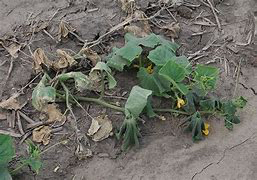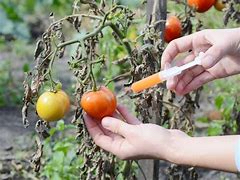The Problem
- Verticillium wilt is a particularly nasty fungal disease that lives in the soil.
- It invades susceptible plants through their roots and spreads through the plant’s vascular system.
- The list of plants affected by verticillium wilt is extensive and includes trees, shrubs, garden annuals, and perennials.
- Vegetables commonly and severely affected by Verticillium wilt include tomato, pepper, eggplant, and cucumber.
- Other vegetables such as bean, beet, broccoli, Brussels sprouts, cabbage, chive, collards, garlic, kale, kohlrabi, and leeks are also affected but not as severely.
Identification
- Verticillium wilt symptoms mimic those of other plant diseases and environmental problems, making it harder to diagnose.
- The leaves wilt and curl and turn yellow or red.
- They eventually turn brown and drop off.
- Stems and branches die back.
- It’s not unusual to see these symptoms on one side of the plant while the other side appears unaffected.


- The symptoms of Fusarium wilt (as well as both kinds of blight) are almost identical to those of Verticillium. In either case, the recommended actions are the same.
Controls
- There is no effective treatment for verticillium wilt.
- You should remove and destroy infected plants in order to keep it from spreading your other crops or to your neighbors’.
- It is virtually impossible to eradicate the fungus from the soil.
- The disease remains in the soil for up to ten years, so don’t plant another susceptible species in the same area.
Do Not Compost Diseased Plant Material!
- Catalogues use codes to identify varieties/cultivars that are resistant to wilt: V means the plant is resistant to Verticillium wilt F indicates the plant is resistant to Fusarium wilt.
